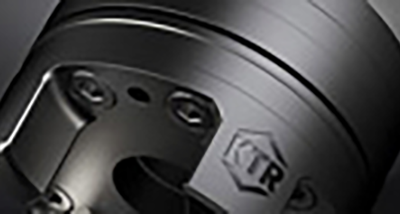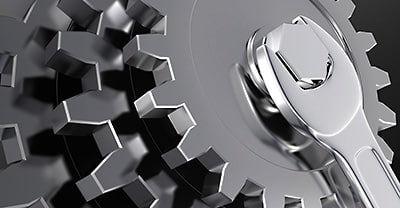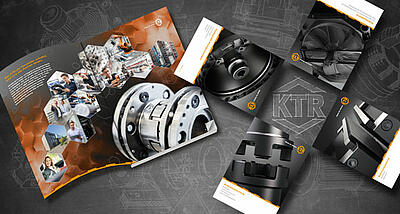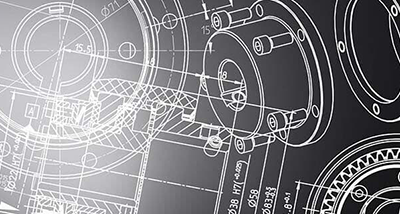- soft start-up of the machine
- unloaded motor run-up, no oversizing of motors
- preventing the power supply from damage
- preventing the system components from damage
- protecting the overall drive train
- power transmission free from wear
- damping vibrations in the drive train
- easy torque control
- solid performance towards external environmental influences

fluid coupling / hydrodynamic coupling
Fluid coupling for smooth start-up of the machine, e. g. conveyor belts
The fluid couplings by KTR Systems are hydrodynamic couplings for hydrodynamic power transmission according to the Foettinger principle.
Operation of fluid coupling:
Originally the operating principle of the fluid coupling is based on the hydrodynamic torque converter patented by Hermann Foettinger (1877 - 1945) (Foettinger principle):
The inertia forces are transmitted via a flowing fluid (e. g. oil) with the driving and driven side being mechanically separated from each other.
With this operating principle the mechanically driven pump wheel accelerates the fluid in the working area via radially arranged inner blades. The rotation energy of the circulating fluid absorbed by the blades of the turbine wheel accelerates the wheel while the resulting mechanical power is dissipated on the driven side.
Versions of fluid couplings / hydrodynamic couplings
Our product portfolio of fluid couplings includes a large number of product types. No matter if a short version with very smooth start-up or a radially dismountable version able to compensate for displacements is concerned - we dispose of the right coupling, please contact us.
Features
- start-up aid for the motor
- limitation of the starting and maximum torque
- damping of the overall drive train
- overload protection in the event of a failure
- no mechanical wear
- can be combined with various couplings of the KTR product portfolio (e. g. ROTEX, POLY-NORM, RADEX-N, ...) to compensate for axial, angular and radial displacements
- use in potentially explosive areas possible





